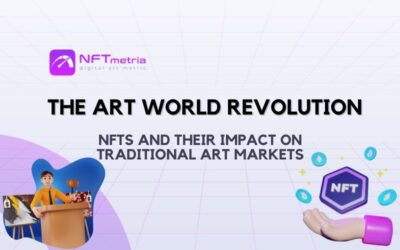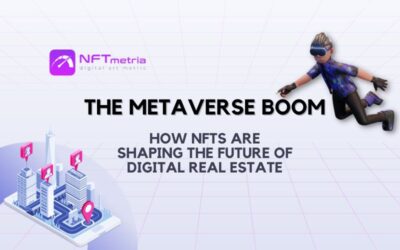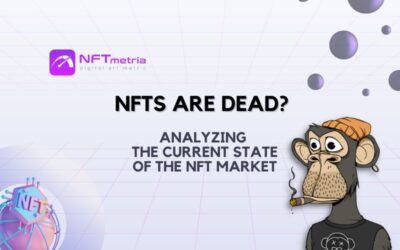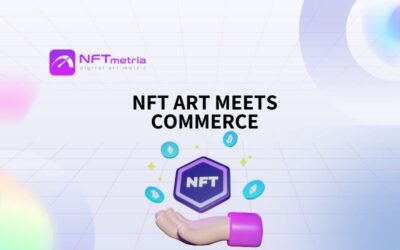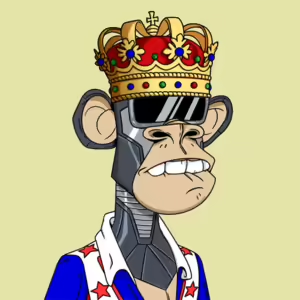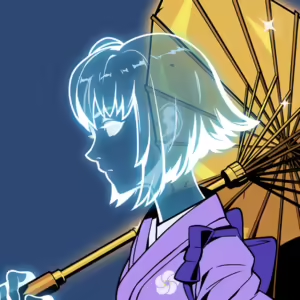The world of art has undergone a seismic shift in recent years, driven by the rise of NFTs (Non-Fungible Tokens). These digital assets, representing ownership or proof of authenticity of unique items using blockchain technology, have disrupted traditional art markets in unprecedented ways. In this article, we explore the impact of NFTs on the art world, backed by real-world examples.
How are NFTs transforming the traditional art market and ownership of arts?
Traditionally, art ownership meant possessing a physical object—an original painting, sculpture, or print. NFTs have challenged this notion by allowing ownership of digital art in a way that’s verifiable, secure, and borderless.
An excellent example is the digital artist Beeple (Mike Winkelmann). In March 2021, he sold a digital collage titled “Everydays: The First 5000 Days” as an NFT for a staggering $69 million at Christie’s, a renowned auction house. This sale showcased the legitimacy of digital art in the highest echelons of the art world. And NFT photographs by famous photographer Cath Simard were sold at auctions at both Christie’s and Sotheby’s. And there are more and more such examples every day.
Democratizing Art Access
NFTs have opened doors for artists who might have struggled in the traditional art world. They provide a direct channel between artists and collectors, removing the need for intermediaries like galleries or agents.
Pak, a digital artist known for their abstract and mesmerizing artworks, launched “The Fungible Collection”. This collection, consisting of 13 pieces, was initially sold for $1 each as NFTs. Their resale value, however, skyrocketed as collectors recognized their value. One piece, originally purchased for $1, resold for over $1 million, demonstrating how NFTs can empower artists financially.
Royalties and Resale Rights
One of the revolutionary aspects of NFTs is the ability to encode royalties for artists into the smart contracts governing their sale. This means artists can receive a percentage of the proceeds every time their work changes hands.
The NFT artist FEWOCiOUS earned over $800,000 in royalties from the resale of their NFTs. This newfound revenue stream ensures that artists continue to benefit as the value of their work appreciates.
True, since the end of 2022, debates about the need for mandatory royalties have not subsided. NFT marketplaces are considering abandoning them in favor of voluntary rewards from the buyer. Their point of view is quite understandable: in conditions of fierce competition, sites thus offer buyers the most favorable purchasing conditions. For example, one of the most famous marketplaces, OpenSea, shocked the market by canceling royalties from August 31. In response to this, Rarible supported the authors and canceled the aggregation of NFTs with the OpenSea platform, thus demonstrating its unambiguous point of view.
But it’s worth considering that from the point of view of earning money for digital artists, everything also remains attractive: each artist can choose a platform that is convenient for them; Today their choice is quite large.
Authentication and Provenance
Forgery and art theft have plagued the traditional art world for centuries. NFTs offer a solution by providing a transparent and immutable record of ownership and provenance.
For example, a blockchain-based NFT can verify the authenticity of a digital or physical artwork. The NFT links to a certificate of authenticity, providing a secure and tamper-proof history of the artwork’s creation and ownership.
By the way, this technology has gone wider: premium offline brands have actively begun to use it to verify the authenticity of their goods. For example, Dior released sneakers equipped with an NFC tag, and each pair of sneakers has an NFT counterpart minted on the blockchain.
Challenges and Controversies of integrating NFTs into the traditional art world
Despite their many advantages, NFTs in the art world are not without challenges and controversies. Environmental concerns related to the energy-intensive process of minting NFTs, issues of copyright infringement, and concerns about speculation-driven bubbles are some of the ongoing debates. And since the market is in its infancy, we will definitely see a logical development and solution to these difficulties.
Conclusion
NFTs have ushered in a new era for the art world. They’ve democratized access to art, empowered artists, and revolutionized the concept of ownership. As the technology matures and these challenges are addressed, NFTs will likely continue to transform how we create, buy, and sell art. The traditional art market can no longer ignore the digital revolution; instead, it must adapt and evolve to remain relevant in an NFT-driven art world. The journey is just beginning, and the future promises exciting possibilities for artists, collectors, and art enthusiasts alike.

